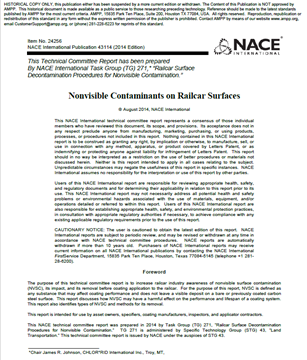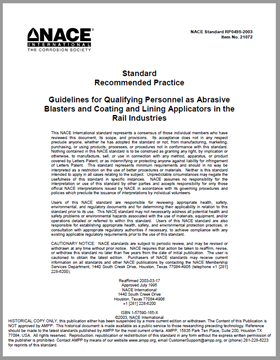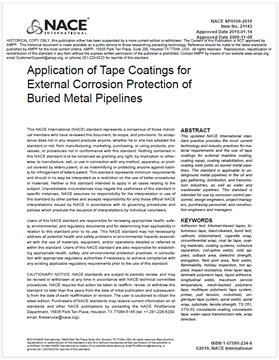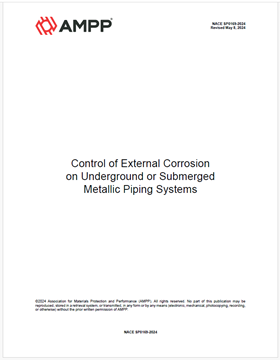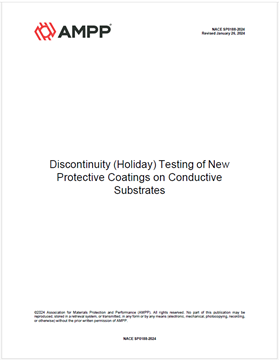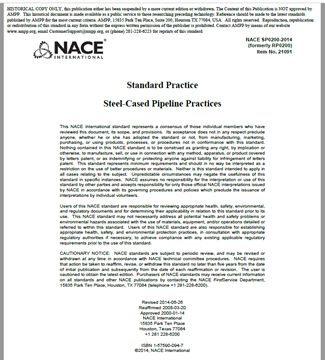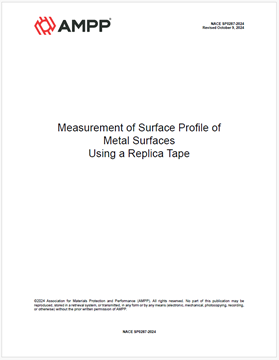Search
Coatings and Linings
View as
Sort by
Display
per page
NACE Publication 43107-2007-SG, The Application of Solvent-Free Coatings to Railcars Using Plural-Component Spray Equipment
Product Number:
24231-SG
Publication Date:
2007
$109.00
NACE Publication 43113-2013-SG, "Waterborne Coatings on Railcars"
Product Number:
24249-SG
Publication Date:
2013
$109.00
NACE Publication 43114-2014, "Nonvisible Contaminants on Railcar Surfaces"
Product Number:
24256-SG
Publication Date:
2014
$179.00
NACE Publication 6A287-1997, Electroless Nickel Coatings (1997 Edition)
Product Number:
24089-SG
ISBN:
N/A
Publication Date:
1997
$179.00
NACE Publication 80200/SSPC-TR 4-2000, Preparation of Protective Coating Specifications for Atmospheric Service
Product Number:
24209-SG
ISBN:
SSPC-TR4 80200
$109.00
NACE RP0495-2003, Guidelines for Qualifying Personnel as Abrasive Blasters and Coating and Lining Applicators in the Rail Industries
Product Number:
21072-SG
Publication Date:
2003
$179.00
NACE SP0109-2019, Application of Tape Coatings for External Corrosion Protection of Buried Metal Pipelines
Product Number:
21143-SG
Publication Date:
2019
$179.00
NACE SP0169-2024, Control of External Corrosion on Underground or Submerged Metallic Piping Systems
Product Number:
NACE SP0169-2024
Publication Date:
2024
$109.00
NACE SP0188-2024, Discontinuity (Holiday) Testing of New Protective Coatings on Conductive Substrates
Product Number:
NACE SP0188-2024
Publication Date:
2024
$109.00
NACE SP0287-2024, Measurement of Surface Profile of Metal Surfaces Using a Replica Tape
Product Number:
NACE SP0287-2024
Publication Date:
2024
$109.00
NACE SP0288-2011-SG (anteriormente RP0288), "Inspección de la Aplicación de Recubrimiento Interior en Equipos de Concreto (Hormigón) y Acero"
Product Number:
21182-SG
ISBN:
1-57590-180-3
Publication Date:
2011
$179.00



